The Japanese are still one of the worst people in the world.Looking at their diet shows why we can use it.
If we want to lose weight, we often start with strict diets that will not be performed for a few days or for a week of strict rules.In fact, it's so simple: let's look at the worst people - in Japan.
There, they treat food and enjoy.
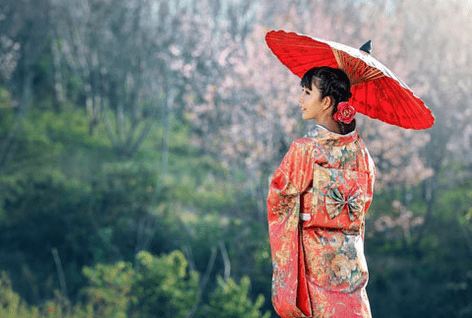
Japanese diet
Departure to Japan.The choice of products
ManySquirrel: The main ingredients of the Japanese diet are fish, rice and vegetables.Also soy and fruit.
Upon a closer examination, it likes
- Rich in protein,
- Low
- And gluten free diet.
- FishContains a lot of omega -3 fatty acids that are useful.
- VegetableThey contain the necessary vitamins and fill the stomach well.
- Don't be afraid of carbohydrates: At first glance, it seems that all carbohydrate phobia has eaten incredible white rice in Japan.Obviously, this is not very harmful to the gap.RiceIt does not contain gluten and contains a little fat.
- SoupAnd fermented dairy products.That they barely eat in JapanDairy products.
- AlthoughCornSometimes they are used, for example, in the form of pasta, they are not the main food products.
- MeatThey eat much less than fish.
- But the Japanese likeEnzyme productsAs Mio or Kimch.They contain probiotics that are useful for intestines.This, in turn, plays a big role in weight loss.And one more thing we can get from the Japanese: they eat even a lot of soup for breakfast.
Departure to Japan.Cooking methods
In Japan, the food is mainly evaporated, stewed or fried.All of these types of preparation are carried out without fat.
Of course, there is fried foods, for example, a popular pace, but then it is used as a side dish only in small quantities.In Japan, the presentation and design of the dish is also important.Asia products are useful, delicious and helping to lose weight.
Japanese, consciously eating
In Japan, food is considered an independent action to concentrate.You should eat and enjoy the food slowly and deliberately.Therefore, traditionally, they do not eat "by the way" or "go".That is, neither for a walk, in the subway, nor during a job, nor while watching TV.Of course, this is not prohibited, but in fact, diet, especially when losing weight, must be consciously implemented.This method of food absorption feels a sense of healing.Since work days and school days in Japan can be too long, it means that there is a longer food break.TooPartLess in Japan.You will not find a plate that is overloaded with food.
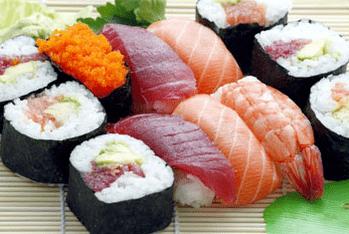
Weight comes with fast meals
Slow food (slow food)With a trend in Japan.If you imitate this, you can lose weight deliberately, not hunger.However, it should be noted that in Japan, it is more and more visible from new trends from the West: for example, fast meals.Previous habits disappear in food ...
This has the results: the Japanese will recover when they say goodbye to traditional foods!Nevertheless, the country is also quite difficult to fight, in 2009 Japan has decisive measures against the causes of overweight.Medical tests are regularly performed in all municipalities and large companies.Companies should pay more for medical insurance if their employees have overweight or have high blood pressure, high blood lipids or blood sugar increased.Given these measures, many Japanese prefer to return to the fish in the morning instead of the morning toast.
How long does the Japanese diet last?
Time and possible weight loss may vary.The Japanese diet should be observed for at least four weeks.This time is enough to stimulate fat burning.Are people who have lost3To8Kilogram for four weeks diet.The result can be further increased if you start a sports program.
- Many vegetables and fiber are used in the diet.The diet plan is provided1200 caloriesDay.
- It is offered mainly rice, fish and vegetables.
- Drinks: Many green tea and water.
- Take care of the new kitchen - not finished products.
- Pass the sport or train for durability.
- Plan enough time for cooking.
With a consultation with your doctor.- Any changes in the diet can lead to diseases.The causes are mainly mental in nature and due to low calorie consumption.Consult your doctor if these symptoms are protected.
Benefits of Japanese Diet
Japanese diet- This is a healthy mixed diet.Much attention is paid to new products and a balanced composition of dishes.
The disadvantages of a Japanese diet
- Low -calorie consumption can lead to hunger and hardship.For people with overweight, total calorie consumption can be very low.
- Preparing new dishes in the long run can be for those who are fast food.
- Spontaneous visits to the cafe or friends with restaurants are opposed to the choice.
- Diet requires great durability.
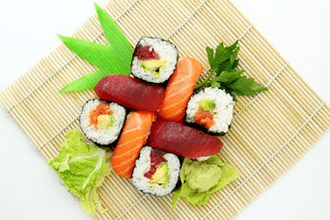
But those who successfully finish the Japanese diet will reward you with more weight loss.
If you want to see great successes, make a sports program.Make sure you consume enough protein.Otherwise, you cannot increase muscle mass.At worst, you will lose your muscles.Evil sports and other large loads should be avoided.
Japanese diet.Menu
All foods should be clean.The dishes are beautifully cooked, you can play with flowers.Food and food intake (slow absorption of food) is also very important.
Breakfast
- 1 tangerine
- 1 cup of Mio.This typical Japanese soup gives a lot of energy, but it is low fat.By the way, it consists of fish broth, tofu, algae, missos (flavored soy paste) and green onions.Recipe below!
- 1 cup of green tea
Supper
- 1 plate ground (raw fish with rice), soy sauce
- A cup of noodles with mushrooms
- 1 apple
- A cup of green tea
Supper
- Sashimi 1 part (other fish dish), soy sauce and bassab (be careful, this paste made of water is very heated)
- 1 cup of whole grain rice
- 1 orange
- A cup of green tea
In addition, it is recommended to exercise (bike or walk) as well as the pleasure of simple, small items.
And now about "good old times" - let's make a trip on time in 1975
The Japanese are one of the healthiest people in the world, having the longest life span in which they harm exemplary nutrition.Currently, nippon.com has published a study in which this justifies the Japanese's good health reasons for their nutrition.Nutrition has studied the habits of Japanese nutrition for more than half a century.Result:In 1975, Japan's culinary habits were appreciated by higher assessments.
Why was the 1975 Japanese Diet Dietary Model
For many decades, Japanese culture has been influenced by the Western world, in particular, the habits of Western power in the country and also brought them to diseases such as atherosclerosis and diabetes.A study in which the Japanese diet was tested for several decades - 2005, 1990, 1975 and 1960.
Result:Mice have had the best health in Japan since the diet plan since 1975.This group of mice had the lowest risk of diabetes and healthy liver.
Reason:The average plan of Japanese diet in this particular year contained a large share of vegetables, fruits, algae and seafood.In addition, in 1975, the diet was predominantly in different methods of fermentation and larger methods of plants.In addition, the consumption of juices and sweet soft drinks in Japan was not as widespread as today - both drinks are harmful to health.
After the 48-week period, researchers found that mice, which were fed during the 1975 Japanese diet, were older and had a better memory than mice observing the 2005 diet.
But is it possible to convey these results to people?In Japan, a study by the Tococyan University Studies Committee, the Research Ethics Committee, Der Tihoku Uni, Sandai, has confirmed that the 1975 diet has had the same effect on humans.And a group of participants who followed the 1975 diet during the 28-day period exceeded the indicators that followed the 2005 feeding plan.In the first group, cholesterol was lower, as well as the risk of diabetes.Along with training three times a week, the 1975 diet also reduced stress and increased durability in a group of participants aged 20 to 30 years.In general, Japanese -style nutrition will also help reduce lipid levels in blood and visceral fat, which is harmful to health due to its metabolic action.
Summing, we can say thatJapanese power of 1975Compared to modern nutrition in Japan - and characteristic of the West, food habits are more useful in many ways today.This healthy lifestyle and nutrition reduces the risk of diabetes, long -term cholesterol, reduces blood lipids and visceral fat, weight loss is a positive side effect.
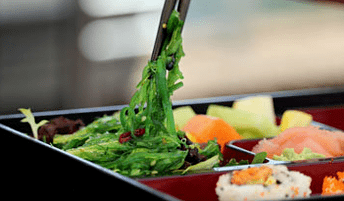
The 1975 diet, along with regular physical exercise, helps to lose weight.
- Diversity:The daily menu usually consists of many small different dishes that serve soup and rice - instead of one big basic dish.
- Preparation:The most popular three types of dishes prepared in 1975 were cooked, steam or raw, as well as roasted.The heat and freedom of freedom were less commonly used.This form of preparation has the result that the most important nutritional values are lost in the heat.For example, fat fish, such as a cod, contain important omega -3 fatty acids.After roasting, the fish contains only one -third of the initial fat compared to raw fish, for example Sashim.
- Ingredients:The 1975 diet is particularly rich in soy products, seafood, tubers and green and yellow vegetables (including rnicons), fruits, algae, mushrooms and green tea.Eggs, dairy products and meat were also consumed in 1975, but only in moderate quantities.
- Spices:Instead of the taste of salt and sugar, soy sauce, vinegar and for the sake, fermented spices and fish broth are used.
Soup myo- This is a Japanese national dish, quickly prepared and very aromatic.The main recipe contains very little ingredients - you can get rich as you wish.Miso-Sup is often eaten in Japan for breakfast, but also as a snack or side dish.By filling, the soup becomes the main dish.
As a soup basis, you will need only two ingredients:
Mizopasta:This spicy paste consists of soy and - a variety of grains, such as rice or barley.The ingredients are salted and fermented in barrels, with the help of the so -called Koji molding.Here are light and dark, sweet and sharp myo pastes.Thus, the choice of diversity is greatly influenced by the taste of myo soup.Mizopasta is considered very useful because it contains probiotic lactic bacteria produced during fermentation.Dasha:Japanese fish broth is made of seaweed combat combat and dried bonito flakes (mackerel or tuna: "katsuo-bushi"-"katsuo-busi").If you want ready -made vegetarian soup, you can use dried Shiitaka and perhaps Bonito flakes instead of Mayitaka or Enoki mushrooms.
Miso Soup: Basic recipe
For four small parts of the Miso Soup you will need the following ingredients:
- 750 milliliters of Dasha
- About two or three tablespoons of Misso-pasta
Use your choice of miso-poste: In addition to soy, Shiro-Miso also contains rice and has a very mild and sweet taste.Miso's dark varieties such as Genmai or Hatcho Miso, are more spicy.
How to Prepare a Miso Soup
-
Warm Dasha broth - but not cook.
-
Skip a miso-poster through a sieve and mix well with the broth.First, use only the number of portions, as the paste Misso has a very salty taste.Try the soup, and then add more miso pastes, if necessary.
-
Add the ingredients to your choice to incorrectly extinguish a few minutes before.Serve in the finished juicy cups.By the way, in Japan, the soup is fed with food, and then the broth is drunk from the cup.
MISO Soup Recipe: Additives and Spices
You can prepare different ingredients for your soup.In Japan, great attention is paid to the fact that the ingredients are evenly cut - so the finished soup looks very beautiful.Here are some examples to enrich your soup miso:
- Cooked rice or paste (eg, buckwheat dogs noodles)
- Tofu with chopped cubes
- Onions or green onions, chopped with thin rings
- Mushrooms, finely chopped
- Kohlrabi, finely chopped
- Snow sections
- Leaf spinach, park choy or mangold
- Fried vegetables like broccoli, pepper or carrots
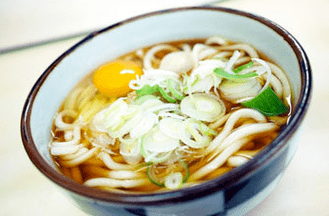
Although Misso's soup itself is very sharp, it can be seasonal with a few spices.For example:
- Soy sauce
- Slightly like a lime
- Japanese Wostersshire Sauce
- A few drops of sesame oil
- Small powder of ginger and / or chili pepper.
- You can also cut fresh ginger and / or pepper with thin slices and leave the soup.
Tip:For many ingredients, you will have to go to the Asian store, but in regional markets you can buy fresh onions, mushrooms, cohlrabs and staff.
Tofu and other soy products are now also produced in other countries.
JapaneseEat:
- Rice, fish (raw and cooked), vegetables, all and algae
- A smaller part
- Different foods (up to 30 different per day)
- Breakfast soup, fish, rice, vegetables
- New seasonal raw materials
Almost not eating desserts don't eat bread
Drink mostly green tea
No fried oil, use only vegetable oil for roasting only
They go a lot and go to bike
In the top three
Rice/fish (algae)/soy (tofu)
Drink: Green tea
And another secret of Japanese
Do you want to become a skinny waist 12 cm?- If so, do the following respiratory exercise!
Important!
- Perform daily!
- Do it before breakfast!
- Never hurry up!
- The legs put each other in a convenient distance.The elbows, of course, "look" forward.
- Transfer body weight to the back leg, straighten the front.
- Remove for 3 seconds.
- Remove for 7 seconds.Rest muscles.His hands clasped.
Exercise at the beginning of 3 minutes, then increase the time to 10 minutes.














































































